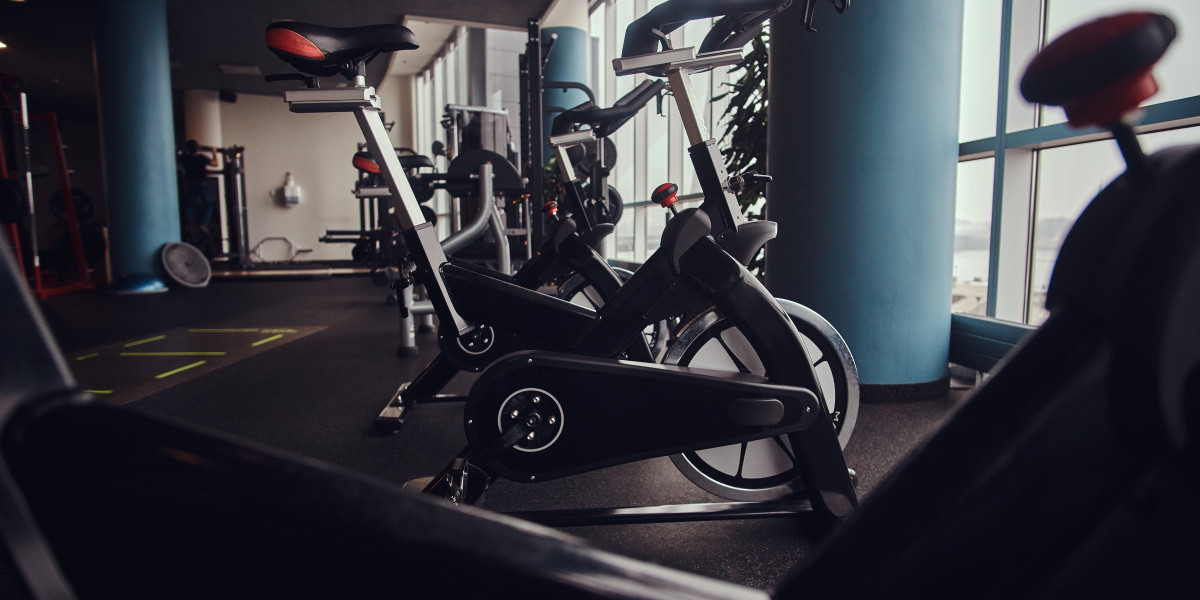In the fast-paced world of fitness, where gyms and outdoor activities often dominate the conversation, stationary cycles offer a reliable and versatile alternative for those looking to maintain or improve their physical health. Whether you're a seasoned athlete or a fitness novice, these indoor bikes can be an excellent addition to your workout routine. This article delves into the benefits, features, and considerations of using stationary cycles for exercise, providing valuable insights for anyone interested in incorporating this equipment into their fitness regimen.

Introduction to Stationary Cycles
Stationary cycles, also known as exercise bikes or indoor cycles, are pieces of fitness equipment designed to simulate the experience of cycling while remaining in one place. They come in various forms, including upright, recumbent, and spin bikes, each catering to different fitness goals and preferences. These bikes are widely recognized for their ability to provide low-impact, cardiovascular workouts that can be easily adjusted to suit individual fitness levels and needs.

The Benefits of Using a Stationary Cycle
Low-Impact Exercise
- Stationary cycling is a low-impact activity that is gentle on the joints. Unlike running or high-impact aerobics, cycling puts minimal stress on the knees, hips, and ankles, making it an excellent choice for individuals with joint issues, injuries, or chronic pain.
Cardiovascular Health
- Regular use of a stationary cycle can significantly improve cardiovascular health. Cycling increases heart rate and blood circulation, which helps to strengthen the heart and reduce the risk of heart disease and stroke.
Weight Management
- Cycling is an effective way to burn calories and manage weight. A 30-minute session on a stationary cycle can burn anywhere from 200 to 400 calories, depending on the intensity and resistance settings.
Muscle Strengthening
- Stationary cycling primarily targets the lower body, strengthening the quadriceps, hamstrings, glutes, and calves. However, with the right adjustments, it can also engage the core and improve overall muscle tone.
Mental Health
- exercise bikes Online, including cycling, has been shown to reduce stress, anxiety, and depression. The rhythmic motion and the release of endorphins during a cycling session can help improve mood and mental well-being.
Convenience and Flexibility
- One of the most significant advantages of stationary cycles is their convenience. You can use them at home or in a gym, eliminating the need to travel to a specific location. Additionally, they can be used in any weather, making it easier to maintain a consistent workout routine.
Types of Stationary Cycles
Upright Bikes
- Upright bikes closely resemble traditional bicycles in their design. Users sit in an upright position, which can be more challenging for the lower back and core. These bikes are ideal for those who want a more intense workout and have good posture.
Recumbent Bikes
- Recumbent bikes feature a reclined seating position with a backrest, which makes them more comfortable for long periods of use. They are particularly beneficial for individuals with back problems or those who prefer a more relaxed cycling experience.
Spin Bikes
- Spin bikes are designed to mimic the experience of outdoor cycling and are often used in group fitness classes. They offer a more intense workout with features like adjustable resistance, heavy flywheels, and the ability to stand while cycling.
Hybrid Bikes
- Hybrid bikes combine elements of both upright and recumbent bikes. They offer a more upright position with a comfortable seat and adjustable resistance, making them versatile for a range of workouts.
Key Features to Consider
When choosing a stationary cycle, there are several key features to consider to ensure it meets your fitness needs:
Resistance Types
- Magnetic Resistance: This type of resistance uses magnets to create resistance, offering a smooth and quiet ride. It is adjustable and can be precise.
- Air Resistance: Air resistance bikes use a fan to create resistance, which increases as you pedal faster. This type of resistance provides a more realistic cycling experience.
- Manual Resistance: Manual resistance bikes use a knob or lever to adjust the resistance. They are simple and cost-effective but may not offer as much precision as other types.
Comfort
- Seat and Handlebars: Look for a bike with an adjustable and comfortable seat and handlebars. A comfortable seat can make a significant difference, especially during longer workouts.
- Padded Footrests: Padded footrests can help reduce pressure on the feet and provide a more comfortable and stable ride.
Connectivity and Technology
- Fitness Apps and Workouts: Many modern stationary cycles come with built-in connectivity to fitness apps, streaming services, and virtual workouts. These features can add variety and motivation to your workouts.
- Display Screens: A good display screen can show important metrics like speed, distance, calories burned, and heart rate, helping you track your progress and stay motivated.
Build and Durability
- Frame Material: The frame material, whether steel, aluminum, or another alloy, can affect the bike's durability and weight capacity. Choose a bike that is sturdy and can support your weight comfortably.
- Flywheel Weight: A heavier flywheel can provide a smoother and more stable ride, which is particularly important for spin bikes.
Portability and Storage
- Folding Design: If space is a concern, consider a bike with a folding design. These bikes can be easily stored away when not in use, making them ideal for small apartments or homes.
- Wheels for Transport: Some stationary cycles come with wheels or a transport handle, making it easier to move the bike from one room to another.
How to Use a Stationary Cycle Effectively
Setting Up Your Bike
- Adjust the Seat Height: Ensure the seat is at the right height to prevent knee strain. When your foot is at the lowest point of the pedal stroke, your knee should be slightly bent.
- Adjust the Handlebars: The handlebars should be adjusted to a comfortable position. For upright bikes, they should be at a height that allows for a slight lean forward without straining the back.
Warming Up and Cooling Down
- Warm-Up: Begin with a 5-10 minute gentle ride to warm up the muscles and prepare the body for exercise.
- Cool-Down: End your workout with a 5-10 minute cool-down ride to bring your heart rate back to normal and prevent muscle soreness.
Increasing Intensity
- Adjust Resistance: Gradually increase the resistance to challenge your muscles and improve cardiovascular fitness.
- Intervals: Incorporate interval training by alternating between periods of high resistance and low resistance. This can help boost calorie burn and endurance.
Tracking Progress
- Use a Heart Rate Monitor: A heart rate monitor can help you stay within your target heart rate zone, ensuring you are working out at the right intensity.
- Record Metrics: Keep a log of your workouts, including distance, time, and calories burned, to track your progress and set new goals.
Common FAQs About Stationary Cycles
1. Are stationary cycles as effective as outdoor cycling?
- Yes, stationary cycles can be just as effective as outdoor cycling for cardiovascular fitness and muscle strengthening. They offer the advantage of controlled resistance and environment, which can be beneficial for those who prefer a consistent workout routine.
2. How often should I use a stationary cycle?
- The frequency of use depends on your fitness goals. For general health and weight management, aim for 3-5 sessions per week. Each session can last from 20 to 60 minutes.
3. Can I use a stationary cycle if I have knee or back problems?
- Stationary cycles are generally gentle on the joints, making them a good option for individuals with knee or back problems. However, it's always best to consult with a healthcare provider before starting any new exercise regimen.
4. What are the best exercises to complement stationary cycling?
- To complement stationary cycling, consider incorporating strength training exercises like squats, lunges, and core workouts. This will help build overall muscle strength and balance.
5. How do I choose the right stationary cycle for me?
- Consider your fitness goals, available space, budget, and comfort preferences. Test different types of bikes if possible, and read reviews to find a model that meets your needs.
Conclusion
Stationary cycles are a versatile and effective piece of fitness equipment that can help individuals of all fitness levels achieve their health and wellness goals. Whether you're looking to improve cardiovascular health, manage weight, or simply enjoy a low-impact workout, a stationary cycle can be a valuable addition to your routine. By understanding the different types of bikes and key features, you can make an informed decision that will enhance your fitness journey. Regular use, combined with proper setup and a balanced workout plan, can lead to significant improvements in both physical and mental health.
Additional Tips for a Successful Stationary Cycling Routine
- Stay Hydrated: Make sure to drink plenty of water before, during, and after your workouts to stay hydrated.
- Wear Proper Clothing: Comfortable, breathable clothing and supportive footwear can enhance your cycling experience and prevent discomfort.
- Mix It Up: Vary your workouts to keep them interesting and challenge different muscle groups. Consider trying different resistance levels, intervals, and workout programs.
- Join a Community: Joining a cycling group or online community can provide support and motivation. Many fitness apps and platforms offer virtual cycling classes and challenges.
- Regular Maintenance: Keep your stationary cycle in good working condition by regularly cleaning it and checking for any loose parts or wear and tear.
By following these tips and incorporating a stationary cycle into your fitness routine, you can enjoy a fulfilling and effective workout that fits seamlessly into your lifestyle.







